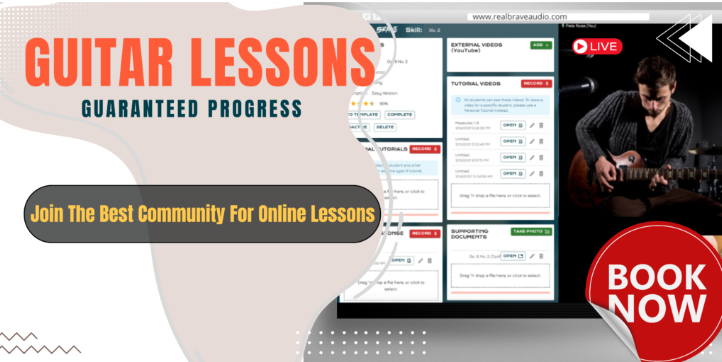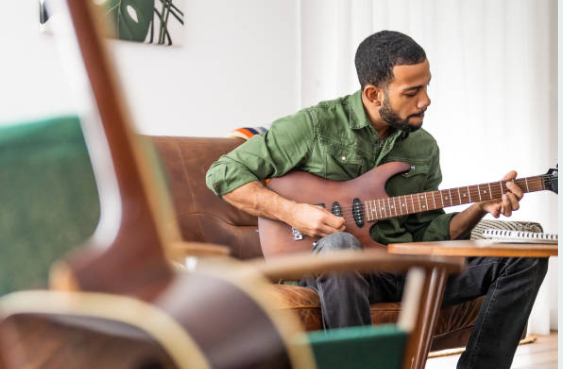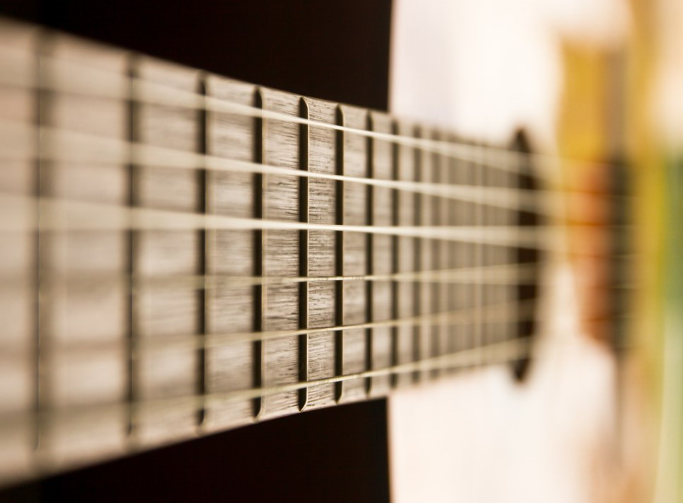2 Easy Guitar Picking Techniques for Beginners

When it comes to guitar playing, mastering the right picking technique can make all the difference in your speed, accuracy, and overall sound. As a beginner, you might find yourself feeling stuck or sloppy with your picking, especially as you try to speed up. That’s where knowing the basics of “alternate picking” and “economy picking” can help you gain control and confidence. In this guide, we’ll dive into what these techniques are, how to practice them, and why they’re essential in your journey to becoming a well-rounded guitarist.
Understanding the Basics of Guitar Picking
Before we get into the specifics of alternate and economy picking, let’s cover the basics of picking techniques. Proper hand positioning, grip, and pick angle will set you up for success as you develop these methods:
- Pick Grip: Hold the pick between your thumb and index finger. Aim for a firm but relaxed grip, which gives you control without tension.
- Hand Position: Anchor your picking hand by lightly resting the side of your palm on the bridge or using your pinky for stabilization.
- Pick Angle: Tilt the pick slightly as it strikes the string. A small angle reduces resistance and makes it easier to glide over the strings.
With these basics in mind, let’s dive into the two main techniques: alternate and economy picking.
1. Alternate Picking: Building Consistency and Speed
Alternate picking is a technique where you alternate between downstrokes and upstrokes, no matter which string you’re on or which direction you’re moving on the fretboard. This method is popular because it provides rhythmic consistency and helps you build speed over time.
How to Practice Alternate Picking:
- Start Slow: Begin with a single string. Practice picking down-up, and down-up, at a comfortable pace. You’ll want to focus on consistent motion.
- Use a Metronome: A metronome is your best friend when practicing alternate picking. Start at a low tempo (e.g., 60 BPM) and gradually increase the speed as you get comfortable.
- Practice Scales: Pick a simple scale, such as the major or minor pentatonic, and use alternate picking as you move through each note. This will help train your hand to switch between strings while maintaining that down-up motion.
Benefits of Alternate Picking:
- Rhythmic Precision: The down-up pattern keeps you on track and builds muscle memory.
- Speed: Consistent alternate picking will help you play faster over time.
- Versatility: This technique is widely used in various music styles, from rock to jazz.
2. Economy Picking: Maximizing Efficiency
Economy picking is a bit different. Instead of strictly alternating, economy picking combines downstrokes or upstrokes when moving to an adjacent string. The idea is to “economize” motion by taking the shortest path to the next note, which can increase speed and fluidity, especially with complex phrases or arpeggios.
How to Practice Economy Picking:
- Understand the Path: With economy picking, you’ll pick down when descending and up when ascending, but instead of a strict down-up pattern, you’ll let the direction of string travel dictate the stroke.
- Practice Arpeggios: Since arpeggios involve jumping across strings, they’re ideal for economy picking. Practice simple triads and use economy picking to minimize hand movement.
- Use Two-String Patterns: A great exercise is to pick two adjacent strings and focus on economy picking when moving from one to the other. For example, on the E and A strings, use a down-up-down pattern when going from E to A, rather than forcing an upstroke.
Benefits of Economy Picking:
- Increased Efficiency: By using the shortest route, you conserve energy and reduce unnecessary movement.
- Fluid Transitions: Economy picking helps you achieve smoother transitions between notes, especially in fast passages.
- Adaptability: While not as universal as alternate picking, economy picking is useful in many genres, particularly in jazz and fusion where quick transitions are key.
Practicing Both Techniques
For the best results, practice alternate and economy picking separately to get a feel for each one’s unique rhythm and movement. Then, try mixing both techniques within a single practice session or song. Here’s a sample practice routine to get you started:
- Warm-Up with Alternate Picking: Choose a single-string exercise or basic scale and start with alternate picking.
- Practice Economy Picking with Arpeggios: Focus on simple chord shapes or triads and try to move smoothly across strings.
- Mix it Up: Choose a simple melody or riff, and experiment with combining both techniques. For instance, try using alternate picking for most notes but switch to economy picking when crossing strings.
When to Use Each Technique
- Alternate Picking: This technique is ideal for rhythmic consistency, making it perfect for straight-ahead melodies, riffs, and exercises where a steady beat is needed.
- Economy Picking: Use this when you need to minimize hand movement or play quick, fluid phrases. Economy picking works particularly well in solos and arpeggiated sections.
Common Mistakes and How to Avoid Them
- Tension in the Hand: Beginners often grip the pick too tightly. Keep your hand relaxed to avoid fatigue and increase fluidity.
- Overthinking Direction: At first, it’s easy to get caught up in whether to pick up or down. Instead, focus on the motion and try to feel the rhythm naturally.
- Skipping Practice with a Metronome: To build speed, you need a metronome. It helps you stay on beat and track progress, especially when mastering the alternate picking pattern.
Final Thoughts
Mastering alternate and economy-picking techniques will open up new possibilities on the guitar, giving you more control, speed, and fluidity. Each technique has its unique strengths, and as you grow as a guitarist, you’ll find that both are valuable tools in your playing arsenal. Start slowly, practice regularly, and don’t rush—building a strong foundation with these techniques will pay off in the long run. Happy picking!
Interested in taking your guitar skills to the next level? Click the below and book a free lesson with us! We’re committed to helping you express yourself freely on the guitar without endless scales and theory.
Author: Daniel Powers Jr, the founder of Real Brave™, serves as the chief inspiration to thousands of students in the Real Brave music instruction program. He’s also the visionary behind PracticePad™, an online platform for live one-on-one online music lessons, lesson tracking, and scheduling. Beyond his entrepreneurial pursuits, Daniel leads a non-profit organization that provides formerly homeless children with access to music education, making a profound impact on their lives. His unwavering dedication to music, innovation, and education continues to inspire individuals to reach their fullest potential while creating positive change in communities. Follow Real Brave on all the socials:
youtube.com/@realbraveinc
twitter.com/realbraveinc
https://www.tiktok.com/@realbraveinc
instagram.com/realbraveaudio
facebook.com/realbraveinc





